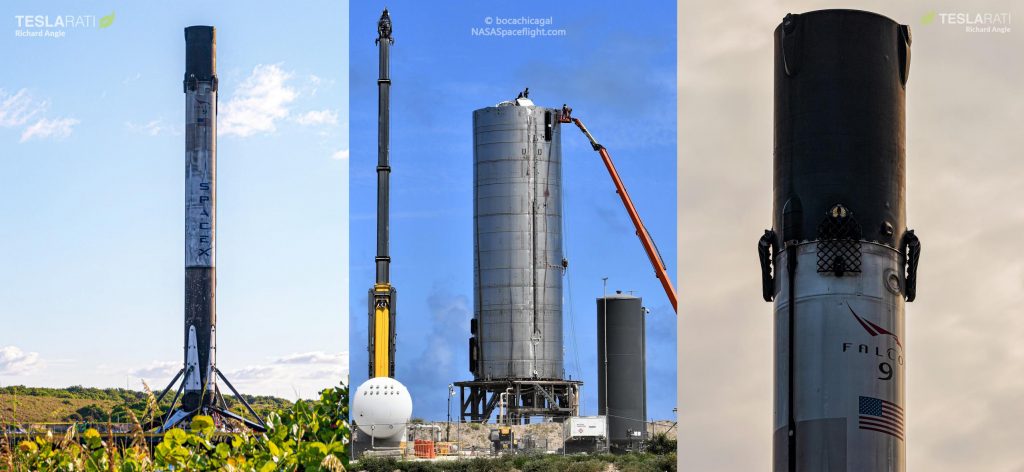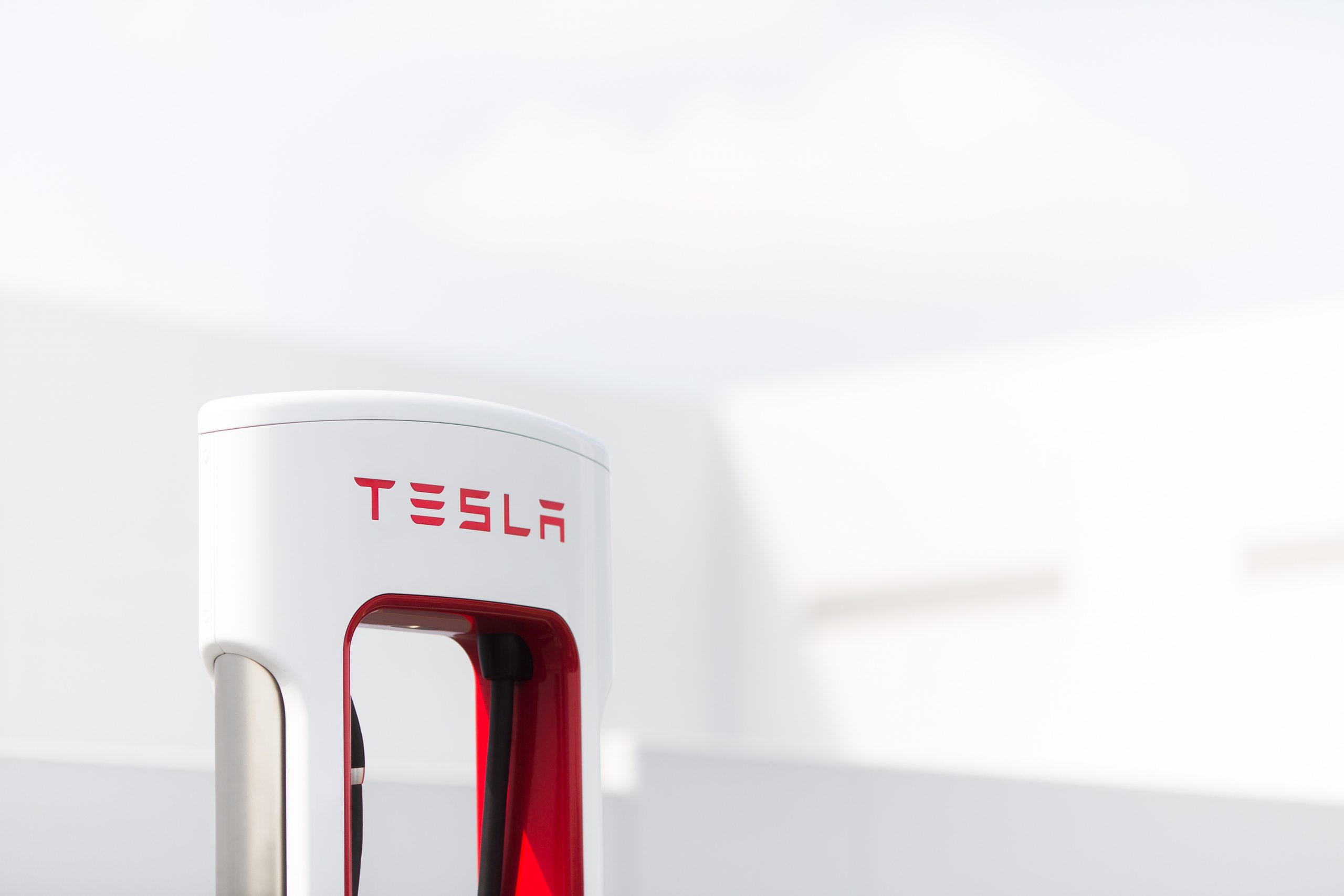

News
SpaceX to attempt first East Coast polar launch in half a century as storms loom
Despite bad weather that forced SpaceX to stand down from a Starlink launch planned earlier this morning, the company is still on track to attempt the first East Coast polar launch in half a century later this evening.
Known as SAOCOM 1B, the Argentinian spacecraft scheduled to launch on Falcon 9 is the second in a pair of large Earth observation radar satellites, using an advanced form of radar to analyze vast swaths of the planet’s surface. SpaceX launched SAOCOM 1A in October 2018.
Originally scheduled to launch as early as March 30th, 2020, SAOCOM 1B has suffered extensive delays as a result of coronavirus-related travel and work restrictions. At long last, the 1600 kg (~3500 lb) satellite is vertical at the LC-40 launch pad atop a SpaceX Falcon 9 rocket, but Florida’s temperamental summer weather threatens to delay the mission into September.

Per the 45th Space Wing tasked with range support for all Cape Canaveral launches, the forecast for SpaceX’s SAOCOM 1B launch predicts conditions will be just as bad as the weather that forced SpaceX to scrub its 10:12 am EDT Starlink-11 launch attempt. Said forecast shows a 60% chance of weather constraint violation (40% GO) due to cumulus and anvil cloud (i.e. thunderstorm) formation, among other concerns. While somewhat unrelated, photographers were unable to set up cameras on time due to a massive, hours-long lightning storm over Cape Canaveral Air Force Station (CCAFS) and Kennedy Space Center (KSC).
With any luck, though, SpaceX will be able to thread the needle between prevailing weather conditions and safely launch SAOCOM 1B. Historically, the company has managed to successfully launch in spite of very discouraging weather forecasts, which is why it almost never aborts launch attempts until the last minute when weather is a concern – conditions can very quickly change.

SAOCOM 1B is the first polar launch attempt from the US East Coast in more than half a century after debris from a failed rocket struck and killed a cow on Cuban land in 1969. By adding a ‘dogleg’ maneuver to tweak its trajectory mid-flight, Falcon 9 will theoretically be able to minimize the risk of a similar accident occurring while still recovering the rocket booster and (perhaps) its payload fairing halves.
After liftoff, Falcon 9 booster B1059 will attempt to return to Cape Canaveral to land at one of SpaceX’s land-based Landing Zones for the first time in almost six months. Fairing recovery ship Ms. Chief is on site to attempt to catch and recover one or both halves of the SAOCOM 1B mission’s Falcon fairing, while twin ship Ms. Tree is several hundred miles north to attempt the same feat after SpaceX’s Starlink-11 launch (now NET September 1st).
SAOCOM 1B is scheduled to launch no earlier than (NET) 7:18 pm EDT (UTC-4) on August 30th. An official webcast will begin around 7 pm.
Check out Teslarati’s Marketplace! We offer Tesla accessories, including for the Tesla Cybertruck and Tesla Model 3.

News
Tesla adds 15th automaker to Supercharger access in 2025

Tesla has added the 15th automaker to the growing list of companies whose EVs can utilize the Supercharger Network this year, as BMW is the latest company to gain access to the largest charging infrastructure in the world.
BMW became the 15th company in 2025 to gain Tesla Supercharger access, after the company confirmed to its EV owners that they could use any of the more than 25,000 Supercharging stalls in North America.
Welcome @BMW owners.
Download the Tesla app to charge → https://t.co/vnu0NHA7Ab
— Tesla Charging (@TeslaCharging) December 10, 2025
Newer BMW all-electric cars, like the i4, i5, i7, and iX, are able to utilize Tesla’s V3 and V4 Superchargers. These are the exact model years, via the BMW Blog:
- i4: 2022-2026 model years
- i5: 2024-2025 model years
- 2026 i5 (eDrive40 and xDrive40) after software update in Spring 2026
- i7: 2023-2026 model years
- iX: 2022-2025 model years
- 2026 iX (all versions) after software update in Spring 2026
With the expansion of the companies that gained access in 2025 to the Tesla Supercharger Network, a vast majority of non-Tesla EVs are able to use the charging stalls to gain range in their cars.
So far in 2025, Tesla has enabled Supercharger access to:
- Audi
- BMW
- Genesis
- Honda
- Hyundai
- Jaguar Land Rover
- Kia
- Lucid
- Mercedes-Benz
- Nissan
- Polestar
- Subaru
- Toyota
- Volkswagen
- Volvo
Drivers with BMW EVs who wish to charge at Tesla Superchargers must use an NACS-to-CCS1 adapter. In Q2 2026, BMW plans to release its official adapter, but there are third-party options available in the meantime.
They will also have to use the Tesla App to enable Supercharging access to determine rates and availability. It is a relatively seamless process.
News
Tesla adds new feature that will be great for crowded parking situations
This is the most recent iteration of the app and was priming owners for the slowly-released Holiday Update.

Tesla has added a new feature that will be great for crowded parking lots, congested parking garages, or other confusing times when you cannot seem to pinpoint where your car went.
Tesla has added a new Vehicle Locator feature to the Tesla App with App Update v4.51.5.
This is the most recent iteration of the app and was priming owners for the slowly-released Holiday Update.
While there are several new features, which we will reveal later in this article, perhaps one of the coolest is that of the Vehicle Locator, which will now point you in the direction of your car using a directional arrow on the home screen. This is similar to what Apple uses to find devices:
Interesting. The location arrow in the Tesla app now points to your car when you’re nearby. pic.twitter.com/b0yjmwwzxN
— Whole Mars Catalog (@wholemars) December 7, 2025
In real time, the arrow gives an accurate depiction of which direction you should walk in to find your car. This seems extremely helpful in large parking lots or unfamiliar shopping centers.
Getting to your car after a sporting event is an event all in itself; this feature will undoubtedly help with it:
The nice little touch that Tesla have put in the app – continuous tracking of your vehicle location relative to you.
There’s people reporting dizziness testing this.
To those I say… try spinning your phone instead. 😉 pic.twitter.com/BAYmJ3mzzD
— Some UK Tesla Guy (UnSupervised…) (@SomeUKTeslaGuy) December 8, 2025
Tesla’s previous app versions revealed the address at which you could locate your car, which was great if you parked on the street in a city setting. It was also possible to use the map within the app to locate your car.
However, this new feature gives a more definitive location for your car and helps with the navigation to it, instead of potentially walking randomly.
It also reveals the distance you are from your car, which is a big plus.
Along with this new addition, Tesla added Photobooth features, Dog Mode Live Activity, Custom Wraps and Tints for Colorizer, and Dashcam Clip details.
🚨 Tesla App v4.51.5 looks to be preparing for the Holiday Update pic.twitter.com/ztts8poV82
— TESLARATI (@Teslarati) December 8, 2025
All in all, this App update was pretty robust.
Elon Musk
Tesla CEO Elon Musk shades Waymo: ‘Never really had a chance’

Tesla CEO Elon Musk shaded Waymo in a post on X on Wednesday, stating the company “never really had a chance” and that it “will be obvious in hindsight.”
Tesla and Waymo are the two primary contributors to the self-driving efforts in the United States, with both operating driverless ride-hailing services in the country. Tesla does have a Safety Monitor present in its vehicles in Austin, Texas, and someone in the driver’s seat in its Bay Area operation.
Musk says the Austin operation will be completely void of any Safety Monitors by the end of the year.
🚨 Tesla vs. Waymo Geofence in Austin https://t.co/A6ffPtp5xv pic.twitter.com/mrnL0YNSn4
— TESLARATI (@Teslarati) December 10, 2025
With the two companies being the main members of the driverless movement in the U.S., there is certainly a rivalry. The two have sparred back and forth with their geofences, or service areas, in both Austin and the Bay Area.
While that is a metric for comparison now, ultimately, it will not matter in the coming years, as the two companies will likely operate in a similar fashion.
Waymo has geared its business toward larger cities, and Tesla has said that its self-driving efforts will expand to every single one of its vehicles in any location globally. This is where the true difference between the two lies, along with the fact that Tesla uses its own vehicles, while Waymo has several models in its lineup from different manufacturers.
The two also have different ideas on how to solve self-driving, as Tesla uses a vision-only approach. Waymo relies on several things, including LiDAR, which Musk once called “a fool’s errand.”
This is where Tesla sets itself apart from the competition, and Musk highlighted the company’s position against Waymo.
Jeff Dean, the Chief Scientist for Google DeepMind, said on X:
“I don’t think Tesla has anywhere near the volume of rider-only autonomous miles that Waymo has (96M for Waymo, as of today). The safety data is quite compelling for Waymo, as well.”
Musk replied:
“Waymo never really had a chance against Tesla. This will be obvious in hindsight.”
Waymo never really had a chance against Tesla. This will be obvious in hindsight.
— Elon Musk (@elonmusk) December 10, 2025
Tesla stands to have a much larger fleet of vehicles in the coming years if it chooses to activate Robotaxi services with all passenger vehicles. A simple Over-the-Air update will activate this capability, while Waymo would likely be confined to the vehicles it commissions as Robotaxis.








